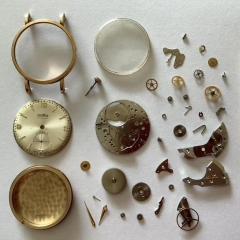Gold lettering on Rolex 3135 movement and L+R Ammoniated cleaning fluid
-
Recently Browsing
- No registered users viewing this page.
-
Topics
-
Posts
-
This may help, suggest covering with plastic film when removing and re-installing if your tweezer skills are not 100% yet 1971-Citizen-Technical-Information-03-Watch-Movement.pdf
-
It all depends on the movement but if you've got to get a new arbor then you'll need to know that anyway.
-
I can't see how that would be cheaper as I help my local charity shops on a pro bono basis. But of more interest to me would be to understand how to work out the specification of a replacement balance given that the chance of being able to order the part from the company or OEM must be effectively zero.....
-
It looks like after rolex someone serviced the barrel with way too much P-125 chronogrease- either that or coffee grounds. Clean it up and you’ll be good to go… https://www.jewelerssupplies.com/chronogrease-p-125-420.008.html
-
Haven't handled a Rolex in a long time but that's not natural. If the barrel is still useable then just grease as normal.
-





Recommended Posts
Join the conversation
You can post now and register later. If you have an account, sign in now to post with your account.
Note: Your post will require moderator approval before it will be visible.